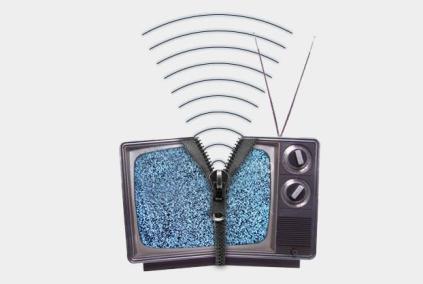White Space – A Connected Future - The Shelly Palmer Report

This past week's election was truly historic, but for technogeeks and future thinkers there was another equally important vote on Tuesday. The FCC voted 5-0 in favor of developing the conditional unlicensed use of white-space television spectrum.
What's "white space?" On February 17, 2009 American television stations will stop broadcasting in the analog spectrum and begin broadcasting in digital. In layman's terms, each station has been assigned certain "channels" for their broadcasts. The unused space between the channels is known as "white space."
FCC Chairman Kevin Martin said, "Opening the white spaces will allow for the creation of a Wi-Fi on steroids. It has the potential to improve wireless broadband connectivity and inspire an ever-widening array of new Internet based products and services for consumers. Consumers across the country will have access to devices and services that they may have only dreamed about before. I fully expect that everything from enhanced home broadband networks, to intelligent peer-to-peer devices, and even small communications networks will come into being in TV white spaces."
It all sounds great, and members of the White Spaces Coalition, including: Microsoft, Google, Dell, HP, Intel, Philips, Earthlink, and Samsung Electro-Mechanics are thrilled. They can see a clear path to a very profitable future. However, as you well know, nothing on the Beltway is ever that easy. The National Association of Broadcasters (NAB), people who make wireless microphones and Dolly Parton (Yes, the one with the big, um … hair) are up in arms. Interference! That's what might happen if too many Dollywood patrons used white space devices during a performance of "9 to 5: The Musical." Dolly warned that white space devices may have "direct negative impact" on Dollywood. Yikes!
All kidding aside, the FCC is getting serious about white space, so let's take a minute to think it through.
Since most of you are not engineers, I'm not going to bore you with the conditions about low power and high power devices included in the FCC ruling. Nor are we going to discuss the technical and bureaucratic difficulties associated with the geo-location requirements. Suffice it to say that consumer devices that will truly take advantage of white space are not quite ready for primetime.
That being said, I think it is important to understand the potential upside of the technology and, for those of you who like to play "media mega-wars: home edition," peer (however superficially) into the mind of Google.
Imagine going to any store and buying a mobile phone, PDA, video monitor, computer, or even a lowly MP3 player and not thinking about what network or phone plan you had to buy to use them wirelessly. How about driving on a highway and having your car know that the driver in the car in front of you slammed on the brakes before your "human" nervous system could react to the brake lights? Or, having your car logon to your home network as you turn down your street and telling your house to open the garage and turn on all the lights? If you can imagine it, you can build a device to do it. A fully operational, fully exploited white space world could feel like living in an episode of Star Trek.
From an infrastructure standpoint, the properties of the electromagnetic waves in the white space spectrum allow them to easily pass through walls and other obstacles which seriously extend the reach and value of the network. Then, there is the "network effect" itself. Metcalfe's law states that the value of a telecommunications network is proportional to the square of the number of connected users of the system. Which simply means, the more, the merrier!
If this really gets done, we could see some real changes to the telecommunications landscape in the next couple of years.
As you know, AT&T and Verizon were the big winners in the auction that the FCC held a few months back. They spent billions of dollars buying up the parts of the analog spectrum that will become available for commercial purposes after the digital transition. Here's the fun part. Everyone thought that Google was going to be the big winner and take over the telecom world. But, they didn't even bid. Why? First, they got the FCC to agree that the winner of the spectrum would have to adopt "open access" rules. Then, they immediately turned their attention to white space. Why buy the cow, when you can get the milk under the fence for free?
Is the future going to include cash-strapped telcos trying to sell off pieces of spectrum they seriously overpaid for while Google cleans up by providing open source software for unlicensed white space devices that all use free (ad supported) Google-provided location-based services? Compared to this, Machiavelli was a satirical work.
To sum it all up:
- This is the beginning of a new era in telecom.
- White space is very, very disintermediating to incumbent telcos.
- Consumers are going to love interoperable devices that have relatively long range wireless connectivity.
- White space may be the technology that allows affordable broadband in rural America.
- Inventors, innovators and businesses big and small will be able to harness the power of ubiquitous connectivity.
- The applications will be as limitless as our imaginations!
I know that the economy is in crisis, but this is truly one of the most exciting developments in years. Start thinking about new business models or the geeks shall inherit the Earth.
Shelly Palmer is a consultant and the host of MediaBytes a daily show featuring news you can use about technology, media & entertainment. He is Managing Director of Advanced Media Ventures Group LLC and the author of Television Disrupted: The Transition from Network to Networked TV (2008, York House Press). Shelly is also President of the National Academy of Television Arts & Sciences, NY (the organization that bestows the coveted Emmy® Awards). You can join the MediaBytes mailing list here. Shelly can be reached at shelly@palmer.net
Check out the Shelly Palmer Report archive.


